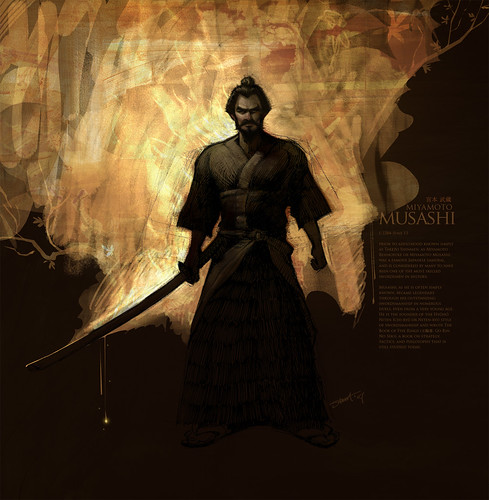
In the rising action of Pulp Fiction (Tarantino, 1994) Jules tells Vincent that he quitting his job as a hitman and plans to "walk the earth" like Caine from Kung Fu. Later in the scene when Jules is collecting his wallet he tells Pumpkin it's the on that says Bad Mother Fucker. No one in their right mind would want to cross a wandering, jeri-curled Jules Winnfield on the open road but your hero guarantees, he is not the baddest wandering mofo that ever did live.
No, for that title one must place themselves in Feudal Japan during the seventeenth century. Known as the Edo period, this is when the cultural center and governmental seat of Japan was shifting from the historic capital of Kyoto to modern-day Tokyo. During this time the country operated under a feudal system; regional warlords called daimyo battled one another for control of populations and resources.
In 1600 a great battle was fought at Sekigahara (also known as the Realm Divide) with the victor, Tokugawa Ieyasu becoming Shogun. He redistributed the land, awarding those instrumental in assisting his defeat of the Western Armies. The Tokugawa Shogunate would unify the country in peace for more than 200 years and is considered the final shogunate of the feudal regime. The defeat of so many warlords left many warriors with no master. These masterless samurai, known as ronin, would often become mercenaries for hire, their blades at the service of the highest bidder. Equally often, they turned into thieves and bandits roaming the countryside.
Enter Miyamoto Musashi. After defeating his first opponent (a much older man) at the age of 13, he set off on his own, following the way of the sword. He challenged the masters of every school of swordsmanship, never losing a battle. His most renowned victories include both brothers, Seijuro and Denshichiro, from the Yoshioka school and the lance wielding monks of the Hozoin in Nara. Musashi was the first to develop and utilize a two sword technique, said to be inspired by the two handed motions of temple drummers.
His most famous dual was with his long time nemesis Sasaki Kojiro. The dual was set on a remote island at dawn. Musashi arrived by boat, carving a wooden sword or bokken on the way that he would use in the contest. Timing his arrival with the tide so that the sun behind him would blind his opponent, he struck down his enemy, retreating in the boat before Kojiro's supporters could seek revenge.
He would end up living out his final years in a cave called Reigando in the Kyushu mountains. There he wrote his manifesto and the definitive guide to strategy, Go-Rin-No-Sho (The Book of Five Rings) completing it just days before his death. The book is still studied today and taught in the top business schools around the globe. For like a swordsman, good business comes from hard work, dedication and focus. The strategy contained therein rendered it required reading among top executives.

Our Hero at Reigando
What sets Musashi apart is the way he lived and studied. Musashi was a painter, sculptor and writer. His paintings, considered some of the best to come out of Japan's history, are characterized by minimal brush strokes- the same way a swordsman would think. For Musashi, strategy was all about integration, using the right tool for the job and practical ways of thinking about everyday life. A true strategist has made master of many art forms. When you attain the Way of strategy there will not be not one thing you cannot understand. You will see the Way in everything.


0 comments:
Post a Comment